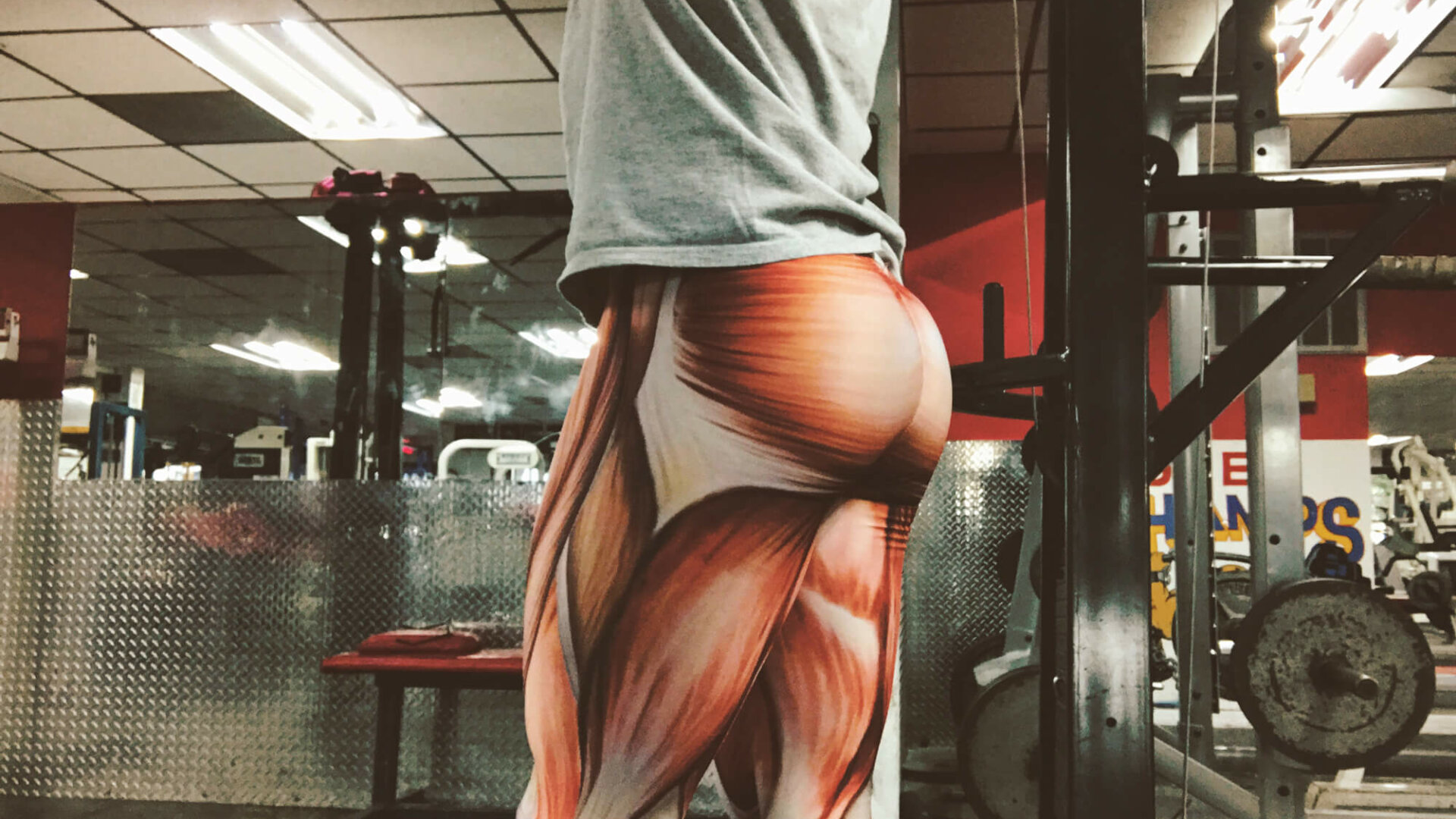Nothing says “I have strength and power” like a nice, firm, and round set of glutes. And for good reason. Your butt muscles are among the biggest in your entire body which is why women and men are capable of such respectable deadlifts.
From a biomechanical standpoint, it makes sense why humans have such big butts in comparison to our quadrupedal animal friends. They help to stabilize us when we stand upright, they help us move forward, and some evolutionary anthropologists debate over whether our big butts were the result of bipedal motion or a necessity for it.
Moreover, some of these same anthropologists and biologists believe our attraction to butts is based on evolution—that is, a lean waist with an ample butt is a sign of fertility. At any rate, we can all agree that the glutes are important for us all.
To that end, according to Dr. Stuart McGill, most of us don’t have the glute motor control or strength we need and as a result, we end up with lower back pain. The name for this is gluteal amnesia. So to start, we need to awaken them. And as I discussed before, we need to focus on hypertrophy because a bigger muscle can yield a stronger muscle.
Motions
I’ve mentioned these in other articles here, but for a brief overview, your glutes are responsible for
- Hip extension
- Hip internal and external rotation
- Hip abduction
- Stabilizing
Three different muscles go into the formation of a curvaceous butt: the gluteus maximus, the gluteus minimus, and the glute medius. Ergo, proper training will focus on each of those and their various functions.
Now that the bare minimum of basics is out of the way, we can move onto some drills.
Drills
So the focus of these is to feel your butt in action doing what it’s supposed to do. Without further ado, let’s get on that.
Posterior Pelvic Tilting
This is a pretty simple drill, as the video shows. You squeeze your butt and tilt your pelvis back. If you happen to have a bad case of Donald Duck butt (Anterior Pelvic Tilt) there’s a simple cue to help your progress. First, squeeze your butt. Second, as you stand there, imagine you are trying to reach your junk to your face. This serves as an excellent warm up to your heavy deadlifts, as the action resembles that of a hard lockout. In addition to that, focus on standing tall and you will be good to go.
Banded Hip Thrust
Banded hip thrusts take an already useful drill and make it worth its weight in gold. With this, you will know you’re doing it with proper form right from the start. The key for this is that if you feel it in your glute medius (side butt) you’re doing it right. Since you have practiced your posterior tilting already, you can let that serve as a guide for this. Lie on the floor to prepare, tilt the pelvis a bit as described above, and note that position. Your back should be flat on the ground. Start the movement, keep the band tense, and feel your glutes working. Keep it slow and controlled, and squeeze at the top.
Standing External/Internal Rotation
I love this one. Stand in a neutral stance, lift one leg up so you are balanced on one leg. Squeeze the glute to hold yourself. Now, move into external rotation. In the video, I am using my right leg for the drill. I am focusing on corkscrewing my entire leg to the right, causing me to move left. Over time, you feel the glute medius and minimus working to achieve this. It’s worth the wait since most of us are not conscious of these particular muscles and how they move.
After rotating outward, hold for a second. Then rotate back to your starting point. And like the hip thrust, start slow and in control.
Training the Glutes
Once you can activate and feel your glutes in action, the best way to build them is through volume and frequency. Given that we use them every day on top of our training, they can handle a lot. And a good workout will focus not on the gluteus maximus alone, but the other two as well. Along with that, a good glute program will focus on being functional (not in the goofy “functional strength” sense of the word, but functional as it relates to what they do for us in terms of movement).
Having said that, you want to focus on moving in different planes and stabilizing in those planes as well. And for a jump start, an uptick in frequency won’t hurt. In fact, it will only help you. With that in mind, I am giving you a glute workout.
A Sample Workout
Warm up:
Opt for a few rounds of the above drills. Two sets of ten on each should do.
Day 1:
A1: Romanian Deadlifts-12-15
A2: BW Banded Hip Thrust -10-12 with a four count hold at the top Aka squeeze your ass cheeks.
Alternate A1 and A2 and complete 3 times with 30 seconds rest in between after completing A2.
Day 2:
A1: One Legged Deadlift 3×12 per leg
A2: Bulgarian Split Squat 3×12 per leg
Alternate the two and rest 30 seconds after and repeat three times.
Day 3:
A1: Reverse Lunges 3×12-15
A2: Kettlebell Sumo Deadlifts 3×12-15
Alternate the two and rest 30 seconds after and repeat three times. Then:
B1: Kettlebell Sumo Deadlifts 1×30-35
So, there you have a three-day glute training protocol. Repeat that over the course of four to six weeks. I have done this myself and I have added it to client programming (on top of what they already do) as well. The results are positive. No deleterious effect on strength (in fact, it has helped bust some deadlift plateaus), and for those focused on hypertrophy, their butts got bigger.
To implement, you would add it to the end of your normal workout, as a supplement. The higher rep scheme and minimal rest make this easy to do and it won’t add too much time in the gym. More important than that, the fatigue you feel will help you be more conscious of your glute muscles and how they’re firing as you do your heavy strength work.
When you implement this, pay attention to a few more things in addition to weight, sets, and reps. A few examples of what to look for are as follows:
- How is your balance?
- How is your range of motion?
- How is your control of the movement?
- How is your sensation in the glutes while you do these?
Over time, these will improve if they are not where you want them to be.
Conclusion
As with everything, these will take some time to perform at a satisfactory level. If you are already there, so much the better. If you are not, keep practicing and you will get there. As always, focus on what you can do instead of worrying about what you cannot do at the moment. Scale some movements back if you need to, dial back the range of motion as much as you need, and focus on that control.
References
- McGill, S., PhD. (n.d.). Designing Back Exercise: from Rehabilitation to Enhancing Performance. Retrieved from http://www.backfitpro.com/pdf/selecting_back_exercises.pdf
- These butts were made for walking. (1998, November 1). Retrieved from http://discovermagazine.com/1998/nov/thesebuttswerema1545
Originally appeared in a print version of “Discover Magazine.” - Singh, D., PhD. (2002). Female Mate Value at a Glance: Relationship of Waist-to-Hip Ratio to Health, Fecundity and Attractiveness. Neuroendocrinology Letters Special Issue, 23(4), suppl. 4, 1-11. Retrieved April 12, 2017, from http://faculty.bennington.edu/~sherman/sex/whr-singh2002.pdf

